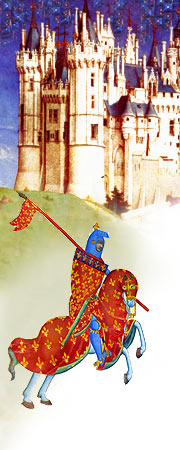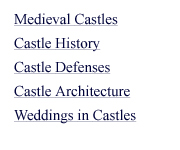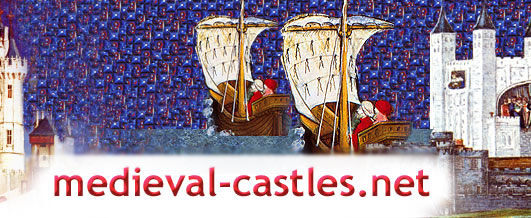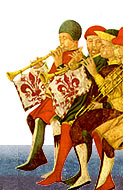|
Weddings in Castles
Medieval
Wedding Traditions
Weddings during medieval times gave birth
to many traditions that today's brides still follow.
Betrothal was an important medieval tradition.
The prospective bride and groom appeared in front of a priest
and made solemn promises. They then exchanged rings and kisses,
then waited for roughly 40 days, when the wedding ceremony
then took place. Grooms were required to pay a "deposit"
at the betrothal, and should he try to back out of an agreement,
he would have to pay a penalty. This was equal to four times
the betrothal price.
Medieval brides often wore blue, the traditional
color of purity, rather than today's white dress.
The traditional Maid of Honor began in
England where the senior of the bridesmaids attended to the
bride's every need the week or so before her wedding day.
She was also responsible for creating the bouquet and other
wedding decorations. On the wedding day she would help the
bride dress.
During the feast, the bride and groom drank
spiced wine from a fine chalice called the Wedding Cup. As
midnight approached, guests tried to get into the newlywed's
bedchamber to bring them a reinvigorating potion called "Bride's
Broth".
Knights returning from the Crusades introduced
medieval society to the tradition of a bridal veil. The veil
was another symbol of purity and was also believed to protect
the bride from "the evil eye."
Garters became an important part of a medieval
bride's wardrobe. As the couple hurried to their room, wedding
guests followed and tried to grab the garter for good luck.
Before this tradition, overzealous wedding guests often shredded
the bride's clothing trying to grab a handful of lucky cloth.
Tradition held that any man who gave his love a bride's garter
would be guaranteed faithfulness.
Flowers were also important in a
medieval wedding. Returning crusaders introduced medieval
Europe to a Saracen tradition of weaving a crown out of orange
blossoms. Only nobles could afford these very expensive blossoms.
|










